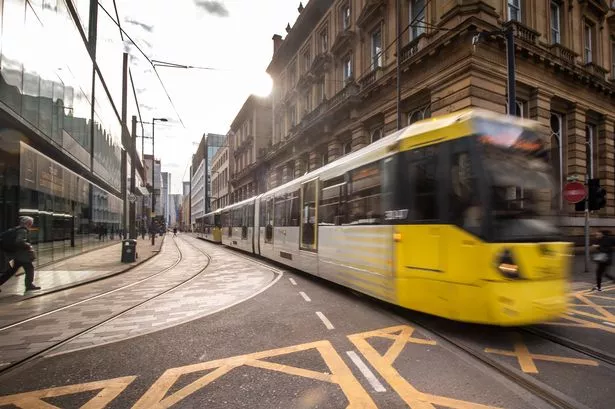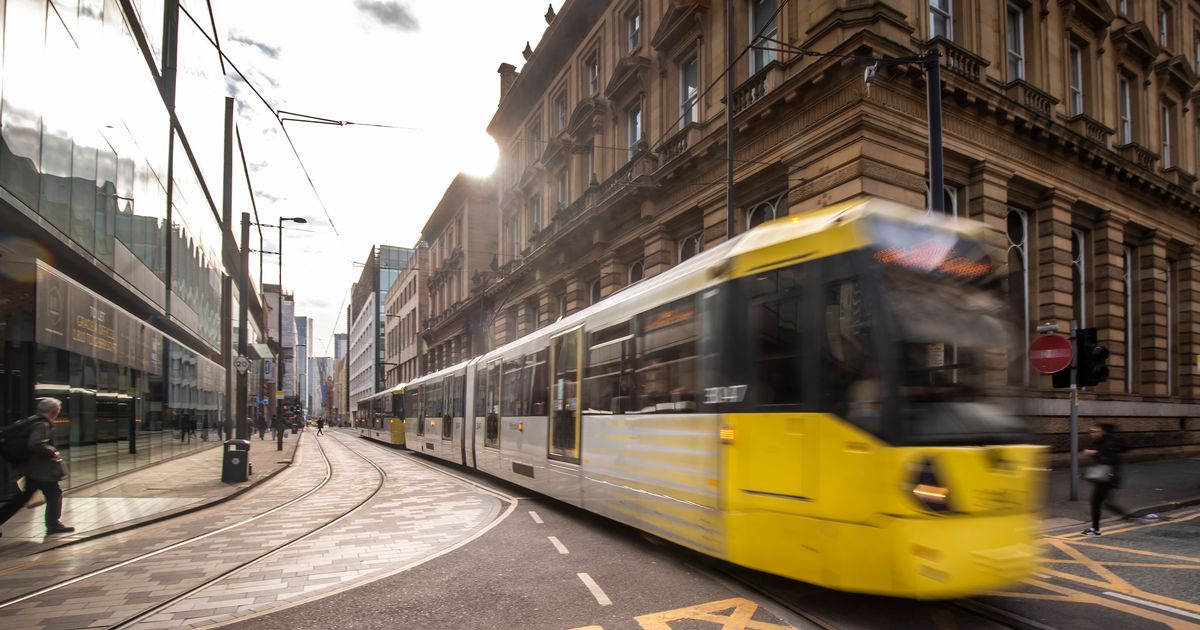An “unbroken path” for a potential tram route has been laid MANCHESTER, ENGLAND – MARCH 19: General view of a Metrolink tram on Mosley Street, Manchester city centre on March 19, 2020 in Manchester, England. (Photo by Anthony Devlin/Getty Images)
MANCHESTER, ENGLAND – MARCH 19: General view of a Metrolink tram on Mosley Street, Manchester city centre on March 19, 2020 in Manchester, England. (Photo by Anthony Devlin/Getty Images)
When asked what they’d like to see improved in Bristol, the majority of locals point to public transport and congestion.
However, grand plans to enhance the city’s transport system are often met with cynicism. News of upcoming changes to city centre junctions, paving an “unbroken path” for a potential tram route, have been greeted with scepticism, both from locals and from Bristol Live readers.
These alterations, set to be implemented over the next few years, will allow buses to travel from the Long Ashton park and ride in the south-west of Bristol, through the city centre, and then to the M32 without ever getting stuck in traffic. This will eventually facilitate the construction of a tram route.
However, several obstacles must be overcome before any work on tram lines can commence, which, even if possible, won’t start until the 2030s at the earliest. Bristol has been embroiled in years of disputes over whether it should have an underground, and decades of failed tram plans. Owing to the lengthy planning process required by the government, a full business case is anticipated in either 2029 or 2030, costing £7.8 million.
Bristol once had an extensive tramway, until World War II raids took out its power source, and post-war car craze led city planners to shelve repair works. Fast forward to the 2000s, and trams were back on the agenda, with a route planned from Broadmead to Almondsbury, or Cribbs Causeway. Yet, political arguments and procrastination saw these plans fade away – a tale all too familiar even now.
Commenter Eezergoood asks: “So we get a tram line from Southwest to Northeast, great. Now please tell me where the repair and servicing areas will be? Where will the storage lines be for spare rolling stock? It’s all very well to have a line but it needs the infrastructure to keep it running.”
Bpullen101 replies: “There are some great problems to work through, but think of the jobs all those problems will create for Bristol and the region.”
Rebeccal thinks: “The Edinburgh tram system is brilliant, painful to introduce but so easy to travel in the city. It has a route out to the airport as well.”
Bpullen101 replies: “I couldn’t agree more. Currently sat on a tram in Bordeaux on holiday. I caught it from the airport to the city centre. It’s such a dream and it cost me €1.50! Let’s give trams a good go and see how they perform. We’ve tried all the other options for long enough. Many cities around Europe (and the world) have introduced or reintroduced trams just in the last 5-10 years.”
Timbuk2 adds: “This is because public transport on the continent doesn’t operate at a profit! That’s the point, it’s there to serve the public. It’s only since the deregulation of buses by the Tories in 1986 has the profit driven world existed on public transport in the UK.”
AdvisoryService101 points out: “Trams are not perfect, the lines get blocked by inconsiderate motorists, the tram lines are slippery, especially when wet. They are dangerous for motorbikes, bicycles, e-scooters and pedestrians and trams struggle on hills and steep bridges.”
Willmitchel replies: “Nearly all of this is wrong, the whole point of segregating a route is so that trams and buses cannot be obstructed by motor vehicles. Tramways are not dangerous for cyclists and pedestrians. On the contrary, trams are pedestrian and cyclist-friendly because their movements are entirely predictable. In continental Europe, trams coexist with pedestrians and cyclists. Many public spaces that would be ruined by car traffic are open to trams because they are quiet and safe.
“Trams do not ‘struggle on hills’, many hilly cities around the world have trams – San Francisco and Lisbon, for example. A typical tramway can move as many as five times the number of passengers of a busway. There are many, many more advantages of trams.”
Ohthisagain asks: “What is the point? The route they want the tram to take is already served by the railway the majority of the way. This is a waste of time and money.”
Willmitchel replies: “The railways lines in and out of Temple Meads don’t have the capacity to be able to offer high frequency services. That’s why many stations in and around Bristol have services only every 30 or 60 minutes in each direction. Ultimately, if we want to solve Bristol’s congestion problem, we need a high frequency service that can turn up and go. It’s time for trams. There is simply no alternative.”
Blackbeard83 replies: “An underground with regular trains underneath the roads. not on them, is the best alternative.”
Do you think trams are the way to go for Bristol? Can you see them being built? Have your say in our comments section.
